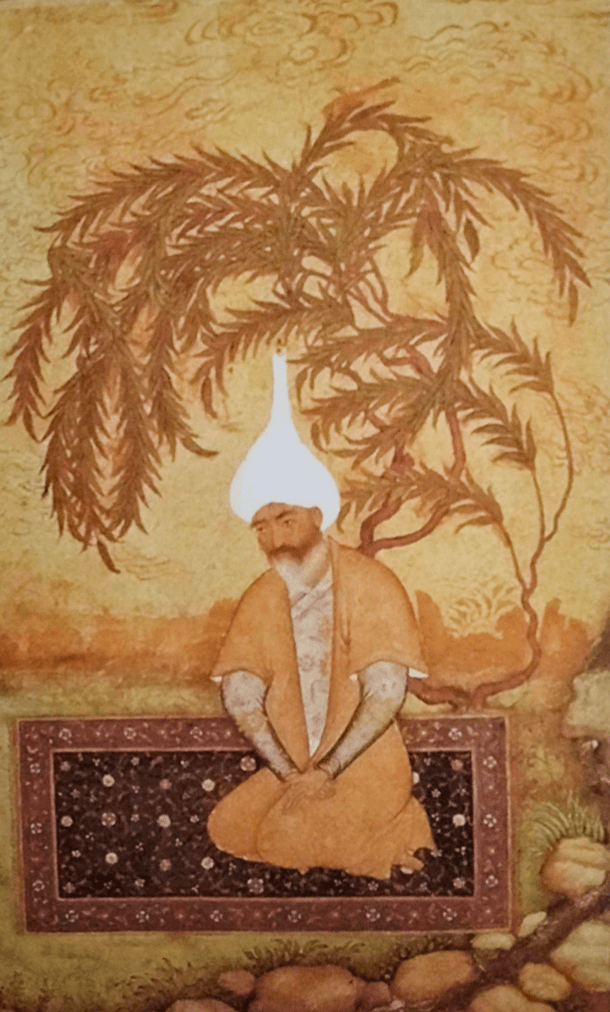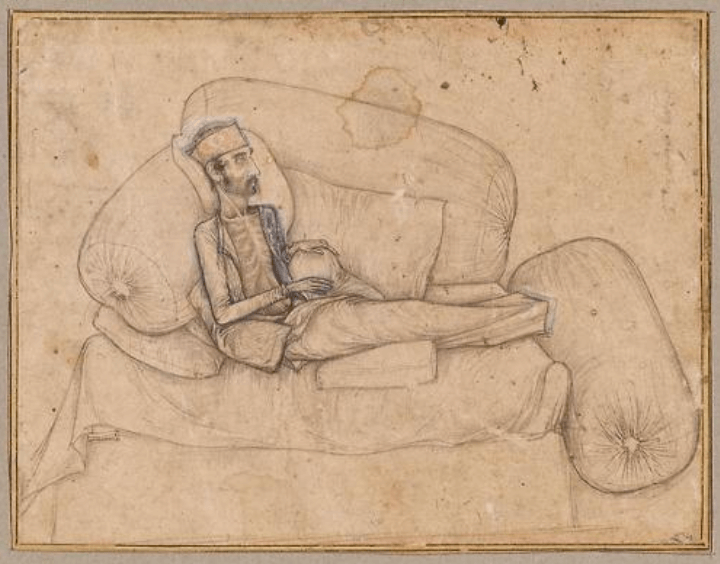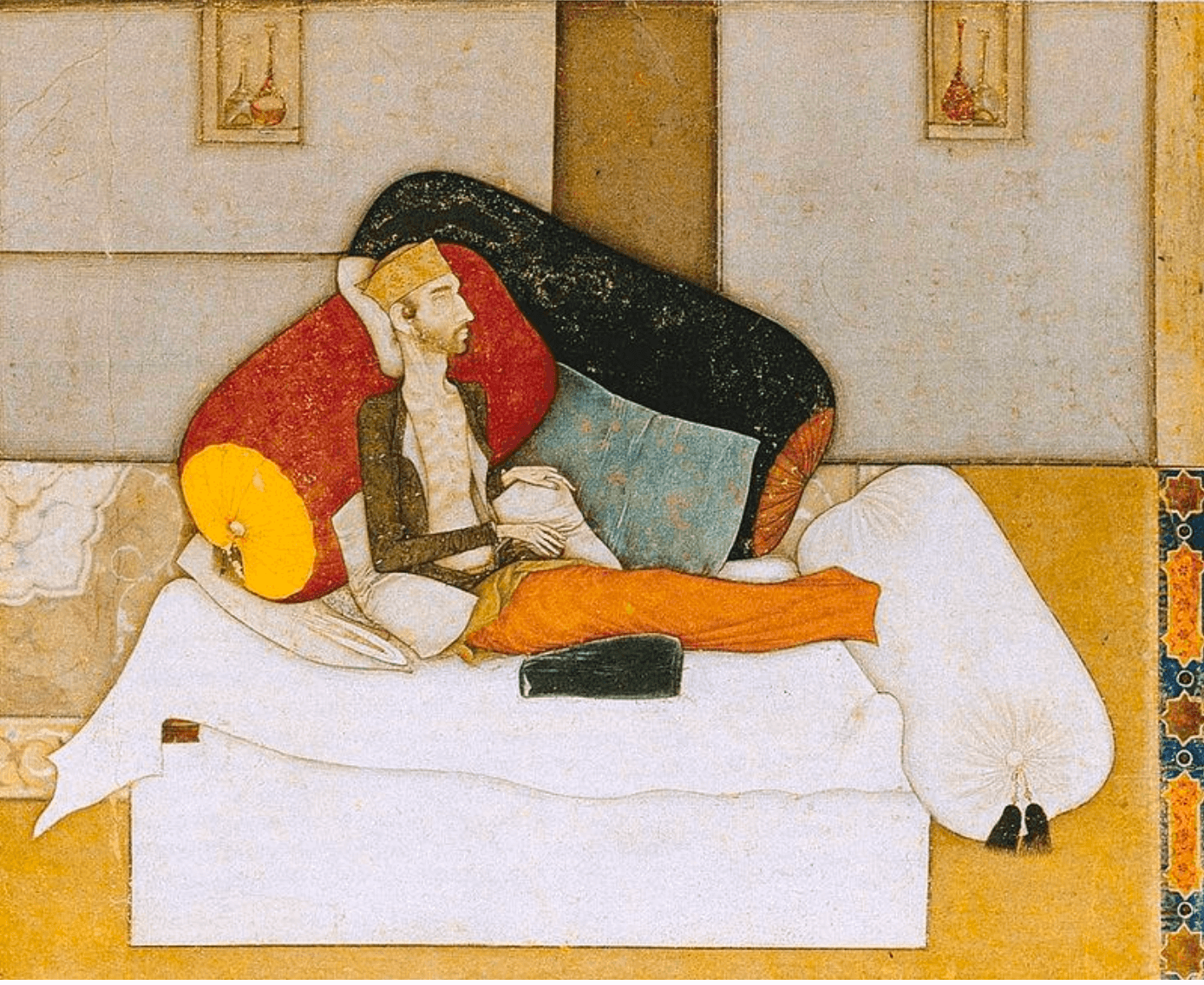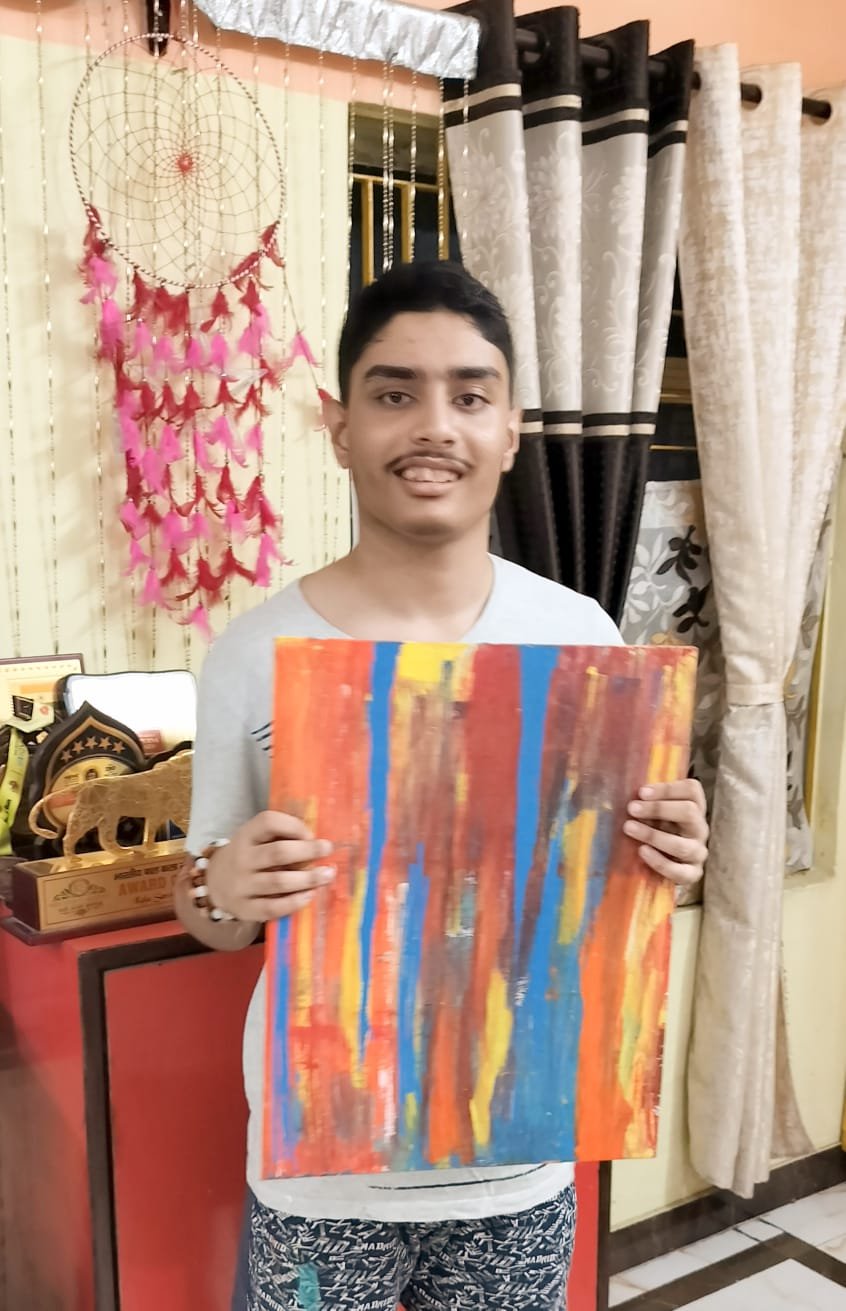The Mughals were perhaps the first in Indian history to introduce a plentitude of illustrations documenting a visual record of activities such as the court life , hunting , etc. Emperor Humayun while in exile , had invited Persian artists Abd us- Samad and Mir Sayyid Ali to set up a royal workshop or Karkhana in Agra. Though Humayun had acquired a taste of the Iranian art, it was during the reign of Akbar that the Mughal miniature tradition flourished .
Vision of Akbar inclined towards the rejection of an orthodox view of placing exquisite volumes with precious possessions of graceful lines and delicate brush works exhibited in personal library. The foundation of Akbar’s history paintings was the depiction of figures as if they were psychologically related. Akbar’s urge was to exhibit a narrative style that could convincingly portray , or rather report his eventful reign in the form of a spectacular pictorial style which was aided by his discovery of European art .
The pictorial ‘reporting’ style
Painting during his reign was highly a pompous practice , intended for exhibiting at public readings and thus incarcerated in illustrations of histories and chronology .The workshop under Mir Sayyid Ali and Abd us-Samad called for the recruitment of many Indian Painters in order to work on illustrations of translated versions of Indian folk tales ad epics like Mahabharata and Ramayana . The paintings not only were different from Safavid painting in terms of color which were notably brighter and inclusion of rich patterns , but also they were mainly focused on depiction of violent scenes like battles , sieges , hunts , etc and they had an exuberant energy.
This authoritative approach which is termed as history painting not only proved to be a revolutionary development but, also expresses Akbar theory of kingship. Hunting scenes specially had their own place in these documentations. Akbar restraints Hawa’i (fig 1) is a fine example of such a hunting scene.

Fig 1 : Akbar restraints Hawa’i by Basawan and Chatar ; 1590
The subject matter might seem to be anecdotal but , Basawan‘s dramatic depiction of the scene reaffirms its symbolic meaning. Basawan records Akbar’s ambitious venture , where the great emperor was mounting on the ungovernable elephant named HAWA’I and was setting it to fight another elephant , RAN BHAG which in the painting is the one chased across the bridge .
Though the painting follows the Iranian tradition of painting , where the drawing is done in outline and then the color is filled , but the amalgamation and dissimilitude of colors like red , green , yellow are affined more to Hindu art and the suggestion of distance by diminution of the scale of elements in the paintings was probably borrowed from European art . Although Mughal empire Akbar had assumed himself as the chief actor in this historical spectacle , it seems that attention was given more to the subject matter which is the ambitious chase and the two massive elephants . The aspect of portraiture was still left to be discovered.
Jahangir’s aristocratic gratification
Though the actual absorption of European conventions by the Mughal court painters cannot be incarcerated into a particular date , but European prints can be witnessed entering the Mughal court in the late 16th century . Also , in around 1578 the arrival of Jesuits brought an illustrated Royal Polyglot Bible published in Antwerp by Christopher Plantin. As a consequence , a plenty of illustrations on Biblical subjects marked their presence followed by an acquired tendency of naturalism and chiaroscuro conquering the later Mughal miniatures as can be seen in the following painting (fig 2) .

Fig 2 : Deposition from the cross (1598)
Commissioned by Jahangir in Lahore inspired by a lost Flemish print of Raphael or Vasar
Salim,the eldest son of Akbar however had an affinity towards a private life which reflected on his vision of Indian Miniature Art . The purpose of image making witnessed a change during his reign . Now , the paintings were intended for personal enjoyment and not for public displays in the form of decorated albums or Muraqqas which were comprised of two calligraphic pages facing each other with one painting in each of them. The narrative paintings gradually got replaced by album paintings which were individual works of art . With the flourishment of artistic personalities and their sensibilities many genres of painting had been born . Portraiture , however had managed to carve a niche for itself . The naturalism partly inspired by European art had encouraged painters to invest in faces as well as figures with reliability . Single figures were now placed against plain backgrounds or distant landscapes . The miniature paintings served as a testimonial of how the Renaissance concept of ‘consistent lighting ‘ was explored , thus emanating tensions between naturalism and the formal arrangement of lines and colors. Not only the Mughals were the patrons , now , some of them especially royal women like Sahifa Banu became amateur painters . Portrait of Shah Tahmasp (fig 3) by Sahifa Banu is an example of depiction of portraiture during Jahangir’s reign.
Fig 3 : Portrait of Shah Tahmasp by Sahifa Banu ; early 17th century
The painting shows Shah Tahmasp in meditation with a tree in the background and the use of rhythmic lines, possibly representing clouds . Though, his attire has conventional folds in it , the contrasting blue carpet seems to be affined to decoration . Perhaps , these were merely signs of Sahifa Banu, being an amateur painter .
The Dying Inayat Khan (fig 4 & 5) however , is possibly the only portraiture of a man reduced to skin and bones as a result of opium addiction in the history of Mughal miniature , particularly during Jahangir’s reign.
fig 4 : Dying Inayat Khan (preliminary drawing)

Fig 5 : Dying Inayat Khan ; 1618-19
Besides the conscious application of carefully placed patches of bright colors , we get to see the soft contours that highlight the rib cage of Inayat Khan and impart a geometrical structure like feel to his body. Jahangir’s workshop had come up with a development in naturalistic color compositions with a stress on tonal values . This painting is an amalgamation of the most refined artistic sensibilities with the indifference of the painter towards the implication and the need of anatomical exactitude of the subject.
Mughal miniature painting tradition has always maintained a lyrical air about it even in the depiction of portraitures . The Mughal court painters had led to an establishment of psychological relationships merged in the meadow of narration . Hence , stating that the Mughal miniatures though, borrowed certain qualities of European art was always affined to its own style and thus had always worked on its new possibilities .




